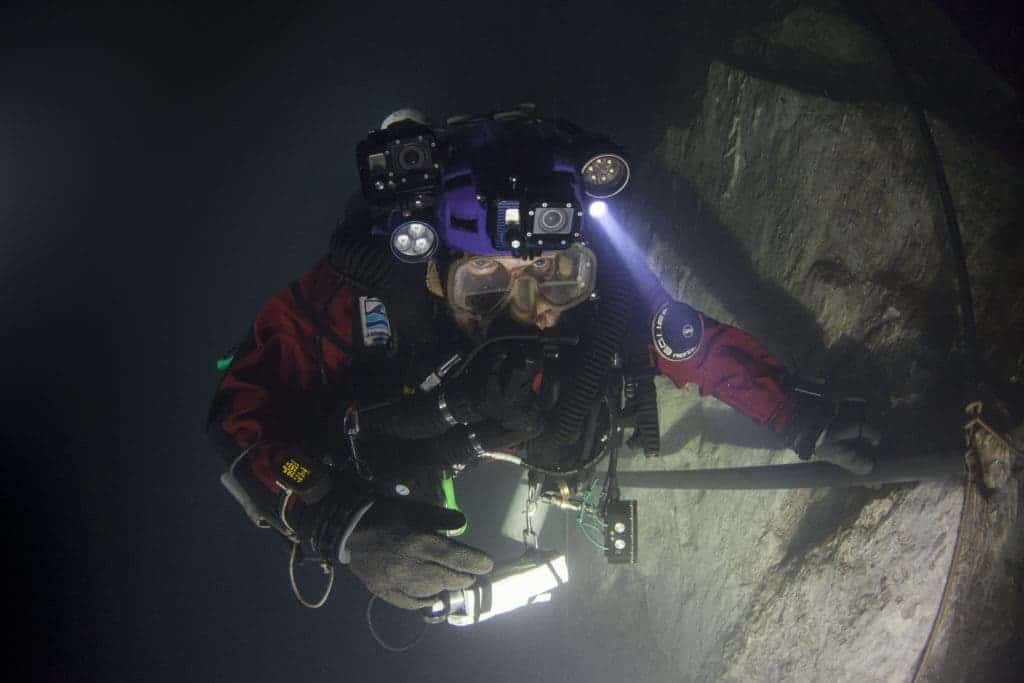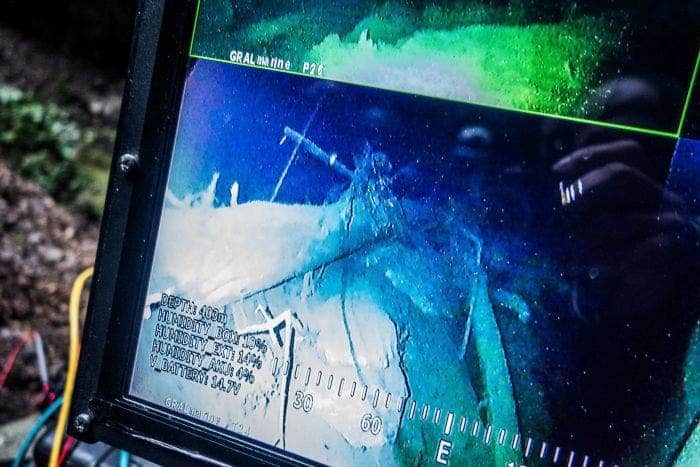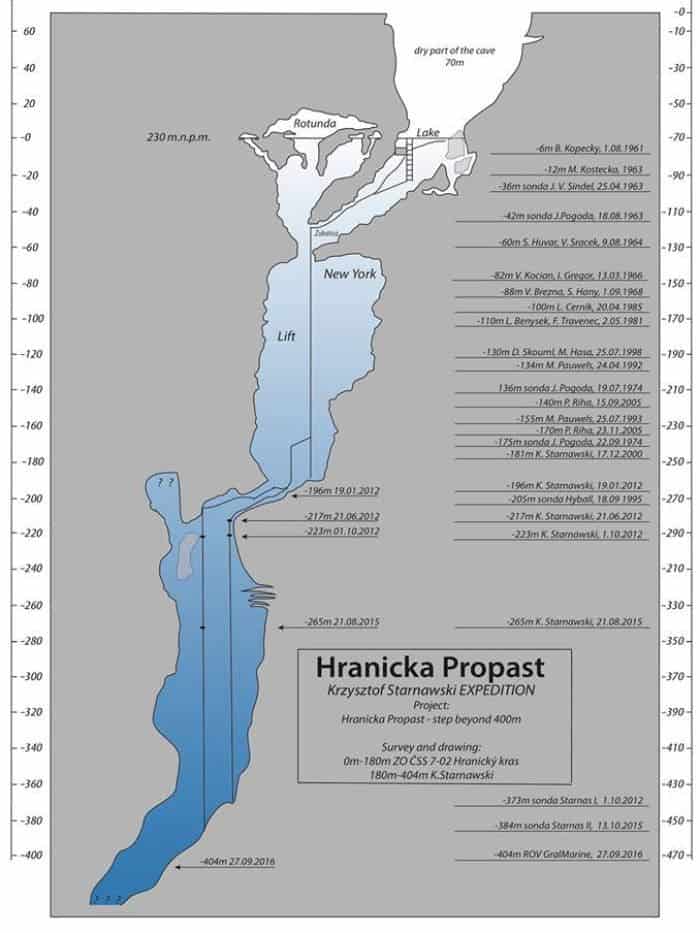
A team of Polish and Czech explorers reports that the flooded limestone cave of Hranicka Propast, or Hranice Abyss, located in the eastern part of the Czech Republic, is the deepest underwater cave in the world. The Czech Speleological Society says the cave is at least 404 meters deep. In reality, it could be much deeper since the submersible robot used by the explorers had to pull out before it could spot the bottom.
The team was led by Polish explorer Krzysztof Starnawski. In 2015, Starnawski strapped on scuba gear and passed through a narrow slot of the cave. He managed to dive to 265 meters down without reaching the cave’s bottom. This prompted him to learn more but diving that deep required him to spend over six hours in a decompression chamber. That’s annoying, not to mention dangerous, so the team decided to use a remotely-operate underwater robot (ROV) to record the depth of Hranicka Propast.

Last week, Starnawski’s team dived to about 200 meters deep and from there on released the ROV which descended to about 404 meters deep — the full length of its chord. Although the robot went as deep as it could, the bottom of the cave was still nowhere in sight, prompting the team to speculate it could be much deeper.
“During this push, the most important part of the job was done by the robot,” he said.
“I scuba dived down to 200 metres just before the ROV’s deployment to put in the new line for the robot to follow.
“The goal was to give the ROV a good start from there to the deepest part of the cave.
“The results were astonishing,” he added.

Even so, Hranicka Propast beat the previous record holder, a flooded sinkhole in Italy called Pozzo del Merro, by 12 meters.
The team plan of exploring the Czech cave even further — this time they’ll use a longer rope.
National Geographic was the first to report this story and was also partially responsible for the funding.



